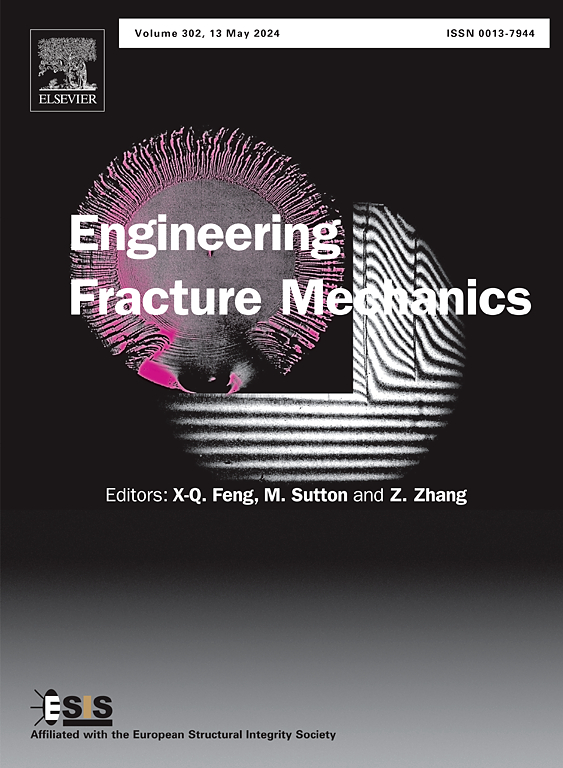Investigations on mechanical behaviors and failure mechanisms of rock-concrete composite specimens with different interface inclinations subjected to freeze-thaw cycles and uniaxial compression
IF 4.7
2区 工程技术
Q1 MECHANICS
引用次数: 0
Abstract
The purpose of this study is to investigate how long-term freeze–thaw (F-T) cycles affect the failure mechanisms of rock-lining structures in tunnels of chilly areas. F-T cycling and uniaxial compressive strength (UCS) tests are conducted on rock-concrete composite specimens with varying interface angles (0°, 30°, 45°, 60°, and 90°) under 0, 4, 8, and 16F-T cycling. The classification and evolution of cracks during the uniaxial failure process of the composite specimens are explored using PFC2D, which is the novelty of this study. The experiment results are as follows: The F-T cycles will primarily generate tensile-type frost heave cracks, and the sensitivity to crack initiation increases with the cycles. The failure mechanism of the specimens is influenced by both the interface inclination angles and the F-T cycling. For the same interface angle, the crack initiation stress of specimens steadily decreases as the number of F-T cycles increases, while the percentage of shear cracks among all cracks gradually increases. Within the same F-T stage, the crack initiation stress decreases with increasing interface angles ranging from 0° to 60°, and the percentage of shear cracks relative to all cracks gradually rises. However, a sudden increase in crack initiation stress occurs at an angle of 90°.
冻融循环和单轴压缩作用下不同界面倾角岩石-混凝土组合试件力学行为及破坏机制研究
本研究的目的是探讨长期冻融循环对寒冷地区隧道衬砌结构破坏机制的影响。分别对0、4、8、16F-T循环下不同界面角(0°、30°、45°、60°、90°)的岩石-混凝土组合试件进行F-T循环和单轴抗压强度(UCS)试验。利用PFC2D分析了复合材料试件单轴破坏过程中裂纹的分类和演化规律,是本研究的新颖之处。试验结果表明:F-T循环主要产生拉伸型冻胀裂纹,且随着循环次数的增加,对裂纹萌生的敏感性增大;试样的破坏机制受界面倾角和F-T循环的共同影响。在相同的界面角下,随着F-T循环次数的增加,试样的裂纹起裂应力逐渐减小,而剪切裂纹占所有裂纹的比例逐渐增加。在同一F-T阶段,在0°~ 60°界面角范围内,裂纹起裂应力随界面角的增大而减小,剪切裂纹占总裂纹的比例逐渐上升。然而,裂纹起裂应力在90°角处突然增大。
本文章由计算机程序翻译,如有差异,请以英文原文为准。
求助全文
约1分钟内获得全文
求助全文
来源期刊
CiteScore
8.70
自引率
13.00%
发文量
606
审稿时长
74 days
期刊介绍:
EFM covers a broad range of topics in fracture mechanics to be of interest and use to both researchers and practitioners. Contributions are welcome which address the fracture behavior of conventional engineering material systems as well as newly emerging material systems. Contributions on developments in the areas of mechanics and materials science strongly related to fracture mechanics are also welcome. Papers on fatigue are welcome if they treat the fatigue process using the methods of fracture mechanics.

 求助内容:
求助内容: 应助结果提醒方式:
应助结果提醒方式:


